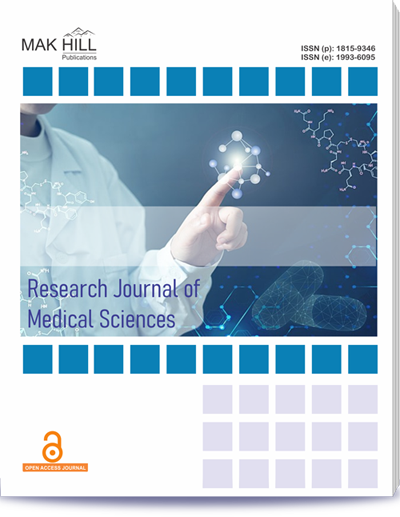
Research Journal of Medical Sciences
ISSN: Online 1993-6095ISSN: Print 1815-9346
Abstract
To evaluate the pattern of cervical Pap smear cytology and to correlate it with histopathological findings. Two hundred tenfemale participants, aged 18 to 60 yearswere enrolled. Cervical smears were taken with the help of Ayer’s spatula and cyto brush to collect specimen from the squamocolumnar junction. The smears were stained with Papanicolaou stain (PAP stain) and slides were examined under light microscope following 2014 Bethesda system. The age group 21‐30 years had 58 patients, 31‐40 years had 80, 41‐50 years had 130 and 51‐60 years had 42 patients. The difference was significant (p<0.05). The maximum number of cases 114 were categorized as negative for intraepithelial lesion or malignancy (NILM). Atypical squamous cells of undetermined significance(ASCUS) wereseen in 52 cases followed by lowgradesquamous intraepithelial lesion (LSIL) in 26 and highgradesquamous intraepithelial lesion (HSIL) in 10, adenocarcinoma in 4 and squamous cell carcinoma in 4 cases. 86%diagnosed on Pap smears correlated on histopathology findings. It has been discovered that Pap smears are useful for early detection of premalignant and malignant cervix lesions.
How to cite this article:
R. Aswathi and Thahseena Abdulla. Evaluation of the Pattern of Cervical Pap Smear Cytology and to Correlate it with Histopathological
Findings.
DOI: https://doi.org/10.36478/10.59218/makrjms.2023.12.521.524
URL: https://www.makhillpublications.co/view-article/1815-9346/10.59218/makrjms.2023.12.521.524